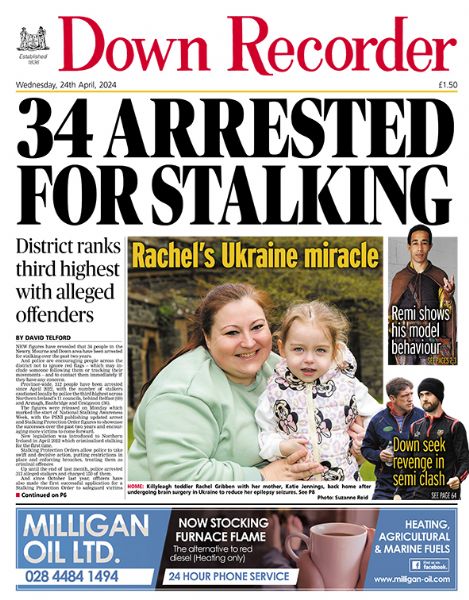Police officer criticised over shooting
Police officer criticised over shooting
21 December 2011
THE decision to locate a checkpoint outside Ballynahinch Police Station on the morning a 23 year-old joyrider was shot trying to evade it was “high risk and ill considered”, according to the Police Ombudsman.
Steven Colwell was shot by a policeman after he failed to stop the car, stolen from a house in Ardglass, at the checkpoint on Easter Sunday, 2006.
A Police Ombudsman’s report released this week found the actions of the policeman were “critically flawed”, and expressed “grave concerns” the constable was acting in such a role that day.
The report also raised concerns that police call handlers had not dissuaded a relative of the car owner from pursuing the BMW ahead of the shooting and stated a decision to establish a checkpoint outside the station was “high risk and ill considered”.
Police Ombudsman, Al Hutchinson, said he accepted the road outside the police station was the accepted location for such a checkpoint and that police officers had little time to organise themselves.
“However, I believe that to establish such a check point on a busy Sunday morning at a location, where one church service was due to start and another was due to end, required a more careful assessment of the risks and options,” he said.
Mr. Hutchinson said that while Steven Colwell’s actions were reckless, the actions of the police officer, referred to as police officer one in the report, played “the greater part” in the tragedy.
His concerns include the officer drawing his gun at an early stage, placing himself in front of the vehicle and remaining there.
Mr Hutchinson did not find evidence of risk of death to nearby pedestrians or the police officers and found the officer’s actions in discharging two shots created significant risk of further casualties.
The report outlines how three officers at the checkpoint had earlier been briefed about the theft of a silver BMW, a ‘creeper’ burglary and about a general threat from dissident republicans.
It details how before 11am, as they monitored the police radio, they heard discussion about the movement of the stolen car, and by 11.10am they heard it was at Seaforde, seven miles away.
The officers believed the car was likely to be travelling towards Ballynahinch and decided to establish a vehicle checkpoint outside the station.
Within a few minutes, one of the police officers caught sight of the BMW in the queue of traffic stopping at the checkpoint. One of his colleagues shouted to police officer one, who then ran towards the car, shouting at the driver to stop.
Mr Colwell, from the Shankill area of Belfast, tried to move the car and drive away, but was hindered by other cars. The officer moved in front of the car and aimed his gun at the driver and again ordered Mr. Colwell to stop the car and get out.
The report said at this stage the engine revved and the car lurched forward with its tyres screeching. Police officer one fired two shots. The first went through the windscreen and the second through the driver’s window.
Mr. Colwell got out of the car and collapsed. Despite the efforts of medical personnel, he was pronounced dead at the scene.
A post mortem found a level of the drug ecstasy and a tranquilliser in his blood which “could have affected his ability to control” the car.
Police officer one said that he could not get out of the car’s way in time and had believed his only option was to open fire if he were to save his life and the lives of members of the public.
He said after he fired the first shot the car continued straight at him so, without moving position, he fired a second shot. The car lost speed, rolled into a driveway and came to a rest.
Many of the 30 witness statements made by members of the public support the police actions. Forensic evidence, however, contradicted the police officer’s account of what happened.
It showed that the front wheels of the car were turned towards the opposite side of the road and the car turned left, away from the police officer. It also showed the officer moved to his left before discharging the second shot through the driver’s side window, as the car passed close to him.
Mr. Hutchinson said that whilst examining police officer one’s personnel records, issues about his health and his previous conduct as a police officer came to light.
The officer, however, mounted a successful legal challenge, which prevented the chief constable from releasing further information to the police ombudsman’s office.
It has also emerged that the policeman involved was previously charged with assault and threats to kill some years before. However, he was cleared of the charges and no action was taken against him.

